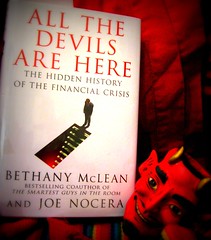Ely, England (PRWEB UK) 17 May 2013
ISO22301 and business continuity management (BCM) come under the microscope in two new titles from specialist publisher IT Governance Publishing (http://www.itgovernancepublishing.co.uk/) (ITGP).
A Managers Guide to ISO22301, by established author and operational risk management and business continuity expert Tony Drewitt, provides a comprehensive guide to understanding BCM and ISO22301. Drewitt has helped small, medium and large organisations develop their BCM policies, strategies and plans since 2001.
Offering a concise and practical overview of the subject, A Managers Guide to ISO22301 is essential reading for all managers, executives and directors with any interest or involvement in operational risk or business continuity management.
Drewitt says: You cant start planning to deal with disaster when disaster is striking. Once it occurs, operational risk – the risk of the unexpected disrupting your business – can be wide-ranging, with effects that extend from financial loss all the way through to catastrophic business failure.
The emergence of the ISO22301 international standard for business continuity, together with a certification scheme, puts management and customers in a position where they can look for evidence that their company, and its supply chain, is genuinely prepared and in a state of overall readiness. Thanks to the fact that ISO22301 is a specification, users are also provided with a set of standard requirements when conducting an audit.
Drewitt has also authored a second new title from ITGP, entitled ISO22301 – A Pocket Guide. The book offers a brief compendium of expert advice on how to satisfy the requirements of ISO22301.
Dedicated to helping readers understand business continuity international practice and what they might need to do to develop a fit-for-purpose BCM system, the work provides the essentials of BCM in a nutshell.
Drewitt says: ISO22301 gives the what but not the how of BCM. The Pocket Guide provides a top-level insight into what is required to develop world-class BCM capability and will help readers to decide when to embark on the development of a BCM system.
A Managers Guide to ISO22301 can be ordered online, in multiple formats, at http://www.itgovernance.co.uk/shop/p-331.aspx (UK) and at http://www.itgovernanceusa.com/product/141.aspx (US). ISO22301 – A Pocket Guide can be ordered online at http://www.itgovernance.co.uk/shop/p-392.aspx (UK) and at http://www.itgovernanceusa.com/product/125.aspx (US).
Ends –
NOTES TO EDITORS:
IT Governance Ltd is the single-source provider for books, tools, training and consultancy for governance, risk management and compliance. The company is a leading authority on data security and IT governance for business and the public sector. IT Governance is non-geek, approaching IT issues from a non-technology background and talking to management in its own language. The companys customer base spans Europe, the Americas, the Middle East and Asia. More information is available at: http://www.itgovernance.co.uk.
IT Governance Publishing (ITGP) is the wholly owned IT Governance Ltd publishing imprint. ITGP is the worlds leading IT-GRC publisher, specialising in books, toolkits and training aids. Insightful and authoritative, ITGP has published books that are the fruit of partnerships with industry-insider authors and blue chip companies such as Capgemini, CA Technologies and Deloitte. More information is available at http://www.itgovernancepublishing.co.uk.
Related Chain Of Title Audit Press Releases









